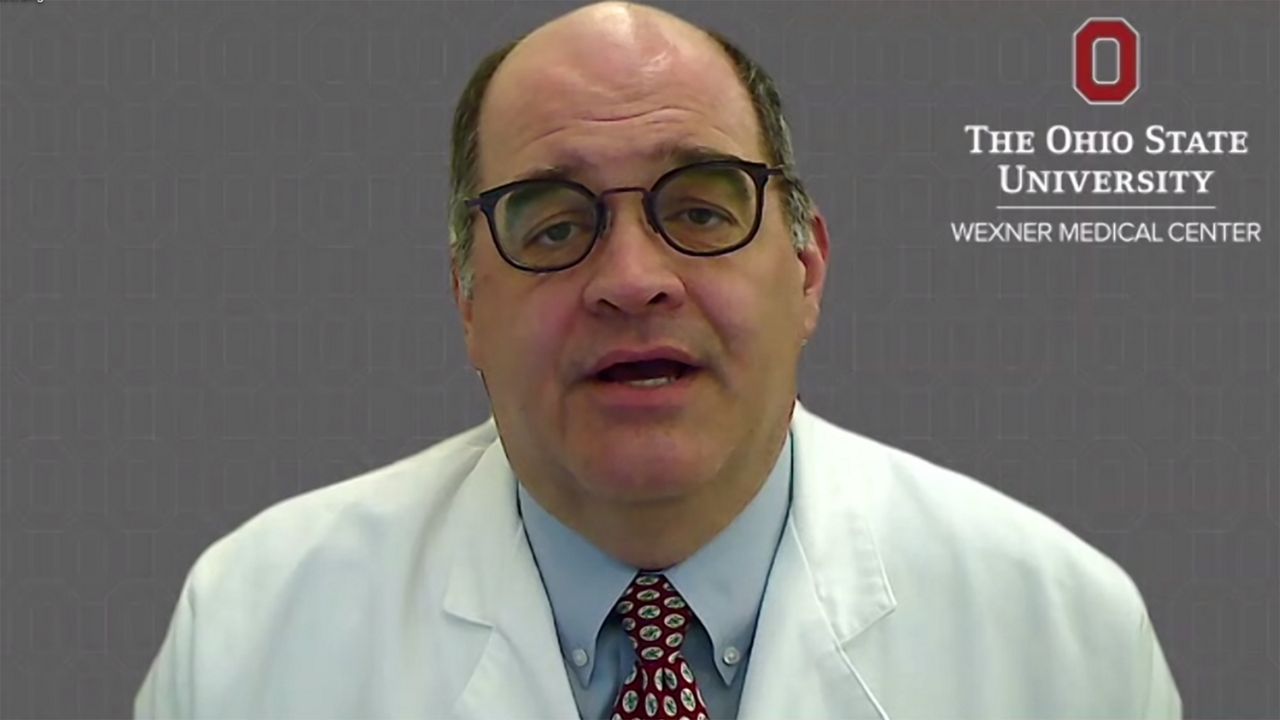COLUMBUS, Ohio — An Ohio State Wexner expert said Wednesday that officials are “cautiously optimistic” COVID-19 cases have peaked in Ohio.
What You Need To Know
- Seven-day average COVID-19 cases have declined by 17% in Ohio
- Hospitalizations are not expected to decline for several weeks
- Wexner officials discussed the rollout of Pfizer vaccine boosters
Wexner’s Chief Clinical Officer Dr. Andrew Thomas said during a news conference with other Ohio State doctors that daily cases in the state have declined in the last two weeks.
“We are cautiously optimistic that we might be at that peak,” he said. “We then become cautiously optimistic that 2-3 weeks out from that peak we may start to see some peak in hospitalizations for COVID-19.”
Ohio’s seven-day average case rate was 6,009 as of the latest update Tuesday, a 17% drop from a recent high of 7,268 average daily cases on Sept. 16.

Thomas said he expects COVID-19 cases and hospitalizations to peak in northern Ohio a few weeks behind southern parts of the state because the latest wave of COVID-19 has spread from south to north in the Midwest.
He said it’s important to emphasize that while cases have come down slightly, they remain at very high levels and it could be a few more weeks until hospitals see any relief.
In central and southern Ohio, Thomas said one in five hospitalized patients have COVID-19 and one in three ICU patients are sick with the virus.
“Even though we may have peaked, and like I said, I think it's another 5-7 days before we can feel comfortable that this is a real trend, we still are at incredibly high rates of hospitalization from COVID-19,” he said.
Ohio reported 347 COVID-19 deaths in the last week as of a Tuesday update from the Ohio Department of Health, which was a new recent high. According to the Ohio Hospital Association, hospitalizations reached a high since January of 3,742 on Monday.
Dr. Thomas was joined by Dr. K. Luan Phan, chair of the department of psychiatry and behavioral health, who discussed the mental health impacts of the pandemic, 18 months into the health crisis.
Phan noted that a recent Centers for Disease Control and Prevention report shows that the number of Americans suffering from anxiety and depression has doubled.
In addition to those with clinical mental health problems, recent surveys show that as many as half of Americans believe that they’re “languishing,” he said.
“Even though we might not be struggling with depression, anxiety or addiction, we just feel burnt out. We feel fatigued. We feel anxious. We feel uncertain,” he said. “People were hoping for a light at the end of the tunnel. They don't see that light yet.”
For those who are struggling with mental health amid the pandemic, Phan said everyone should know they’re not alone, and he encourages talking to a professional or seeking treatment, rather than turning to potentially unhealthy coping mechanisms like alcohol.
Dr. Nora Colburn, an infectious disease specialist, and Crystal Tubbs, associate director in the department of pharmacy, discussed the rollout of Pfizer-BioNTech vaccine booster shots during the press conference.
Colburn said the CDC’s recommendations are “quite open-ended,” allowing many Ohioans who received the Pfizer vaccine to get a booster if they so choose.
“It really is in the patient's court to determine whether they feel that their job puts them at an occupational risk for exposure,” she said. “But I think the other elephant in the room is that we really need people to get their first and second doses.”
Tubbs said Ohio State has pivoted its vaccine strategy to focus on access, offering the shot at “myriad of different locations” and trying to incorporate opportunities to get the vaccine into patient’s routine care.
In earlier months, the hospital was focused on efficiency and streamlined operations at a mass vaccination site, but Tubbs said the goal today is to make getting the shot as convenient as possible for patients.



